- Details
- Hits: 5004
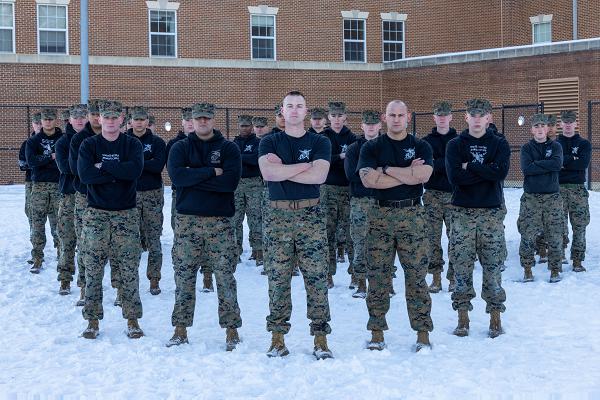
Washington, D.C. (February 3, 2025): Due to their discipline and precision, the Silent Drill Platoon is the personification of Marine Corps excellence. The Platoon is a twenty-four-person drill team that conducts dazzling performances for audiences around the country. So, how do you become a member of such a storied unit? In this photo by Lance Corporal Christopher Prelle, the newest members of this elite group pose for a photo after the culmination of Silent Drill Selection. Candidates must pass a six-week course on advanced drill and ceremony and also train at Marine Corps Air Station Yuma, Arizona to perfect their routines. After the grueling physical training and countless hours spent perfecting the art of military drill, these Marines will earn their “black shirts” and a spot in this elite tradition.
The platoon is known for its unique exhibition involving the precise handling of weapons. In a remarkable display of exactness, members execute a series of calculated drill movements with hand-polished, M-1 Garand rifles with fixed bayonets. The routine concludes with a striking rifle inspection sequence demonstrating elaborate rifle spins and tosses.
- Details
- Hits: 4300
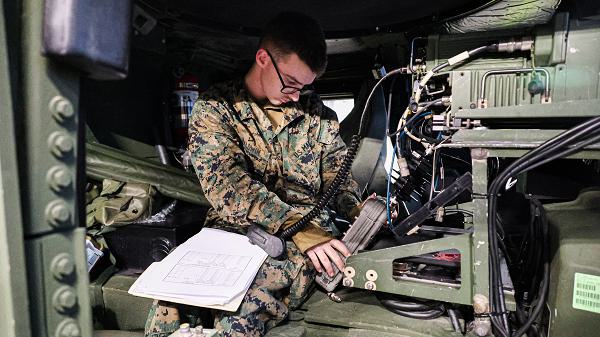
Norway. (February 1, 2025): The key to winning a war against Russia may lie in a series of caves that “preposition” vital military hardware on its border. In this photo by Corporal Nicholas Martinez, a Marine ground electronics transmission system maintainer with 2nd Light Armored Reconnaissance Battalion, 2nd Marine Division, II Marine Expeditionary Force, inspects a radio set inside an up-armored Humvee at Marine Corps Prepositioning Program Norway (MCPP-N).
The MCPP-N is a Cold War era plan to preposition Marine Corps equipment in Europe to defend NATO against a Russian attack. The program uses eight built-for-the-purpose caves to store enough equipment to reinforce a Marine regimental combat team. To accomplish this, the MCPP-N created a network of climate-controlled caverns to store enough material to support roughly 15,000 Marines for 30 days.
- Details
- Hits: 3324
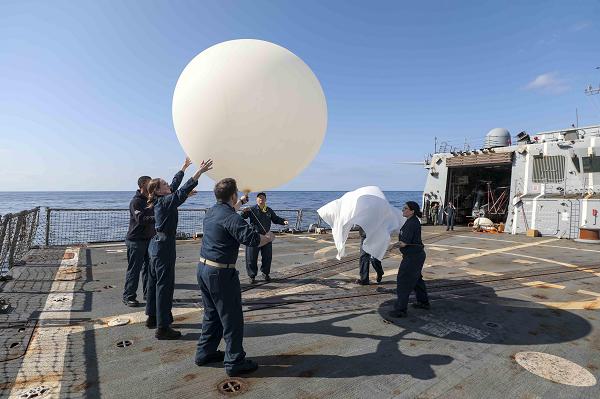
Pacific Ocean. (January 23, 2025): In today’s world of highly advanced aircraft, the U.S. Navy is clinging to an old and reliable tool… the unpretentious balloon. In this photo by Petty Officer 1st Class Donavan K. Patubo, Sailors launch a radar sphere on the flight deck aboard the USS Howard. Surprisingly, the humble balloon continues to be a vital tool for early warning and weather data collection aboard American warships.
The Navy uses radar spheres to detect incoming threats, such as missiles and aircraft, and much more. Besides warning of long-range threats, balloons are used to obtain meteorological data and to calibrate radars aboard ships. Crews routinely launch a radiosonde, a small instrument attached to a helium balloon, that measures barometric pressure, temperature, and relative humidity. These battery-powered instruments transmit data to a ground station via radio. By tracking the radiosonde in flight using GPS, measurements of wind speed and direction can also be obtained. The system provides a wealth of information concerning the real-time state of the atmosphere.
- Details
- Hits: 4274
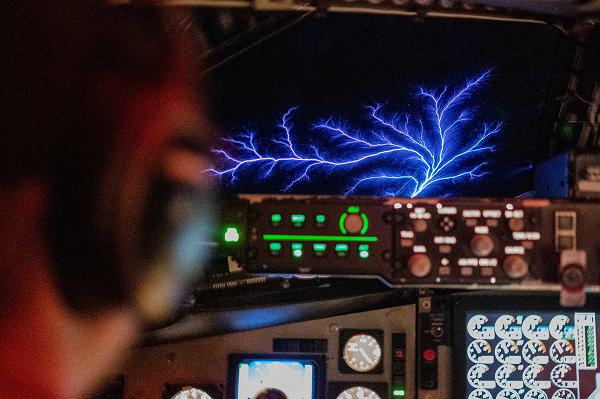
Atlantic Ocean. (February 6, 2025): Ancient mariners were both terrified and reassured by this strange light that seemed to envelope their ships during lightning storms. In this photo by Staff Sergeant Jackson Manske, Captain Russell Ellis flies a routine tanker mission as St. Elmo's Fire, a weather phenomenon, flashes across the window.
St. Elmo's Fire, also called witch’s fire, occurs when a strong electrical field builds up in the atmosphere, usually during a thunderstorm, causing plasma discharges that produce a bluish or violet glow. These lights appear when electrical fields encounter a rod-like object such as a ship’s mast, a chimney, or in this instance the leading edges of an aircraft. The intensity of the lights are determined by the nitrogen and oxygen levels in the Earth's atmosphere and the effect is often accompanied by a hissing or buzzing sound proportional to the strength of the electric field.
- Details
- Hits: 3212

Okinawa. Japan. (February 4, 2025): For military recruits, it is hard to tell if an exercise is meant for pure torture or the best workout routine on the planet. In this photo by Lance Corporal Sav Ford, Marines assigned to Air Support Squadron 2 flip tires during a field meet to commemorate the squadron's 82nd anniversary. While it may seem pointless, tire flipping has some serious science behind it.
First of all, it is a full body exercise that few can match. Flipping tires trains so much muscle while it burns a lot of calories. The routine engages multiple muscle groups simultaneously through one compound movement targeting the back muscles, forearms, biceps, and triceps. Meanwhile, the cardiovascular component makes tire flipping and outstanding choice for improving endurance and overall physical performance. Doing just twenty minutes a day can burn at least four hundred calories.
- Details
- Hits: 3289
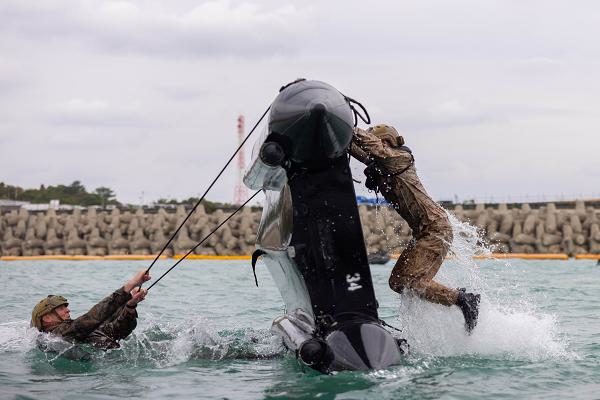
Okinawa, Japan. (January 23, 2025): If you have ever fallen out of a canoe, you can identify with these Marines as they practice flipping a raiding craft during small boat training (photo credit by Corporal Noah Masog). When it happens to civilians, it can be embarrassing. For Marines conducting a raid, getting a raft flipped back over quickly could mean the difference between life or death.
Officially called a “Combat Rubber Reconnaissance Craft” (CRRCs), the Marines refer to them as Zodiacs after their manufacturer. It is used to insert lightly armed raiding parties or reconnaissance teams onto beaches undetected. CRRCs are light weight, easily stowed, and can be inflated in minutes by foot pump. Their buoyancy allows up to ten troops to negotiate rough seas as they approach the beach. This is also when Marines find themselves flipped over into the surf struggling to right their vessel. Believe it or not, there is a whole lot of physics involved in flipping a raft.
Read more: DON’T FLIP OUT… MARINES PRACTICE RECOVERING ZODIACS


